Pâte Sablée is a classic French shortcrust pastry dough known for its sweet, crisp, and crumbly texture. It's used as a base for various tarts and pies, and takes just a few minutes to put together in a food processor. This guide offers step-by-step directions and photos to help you make Pate Sablee effortlessly.
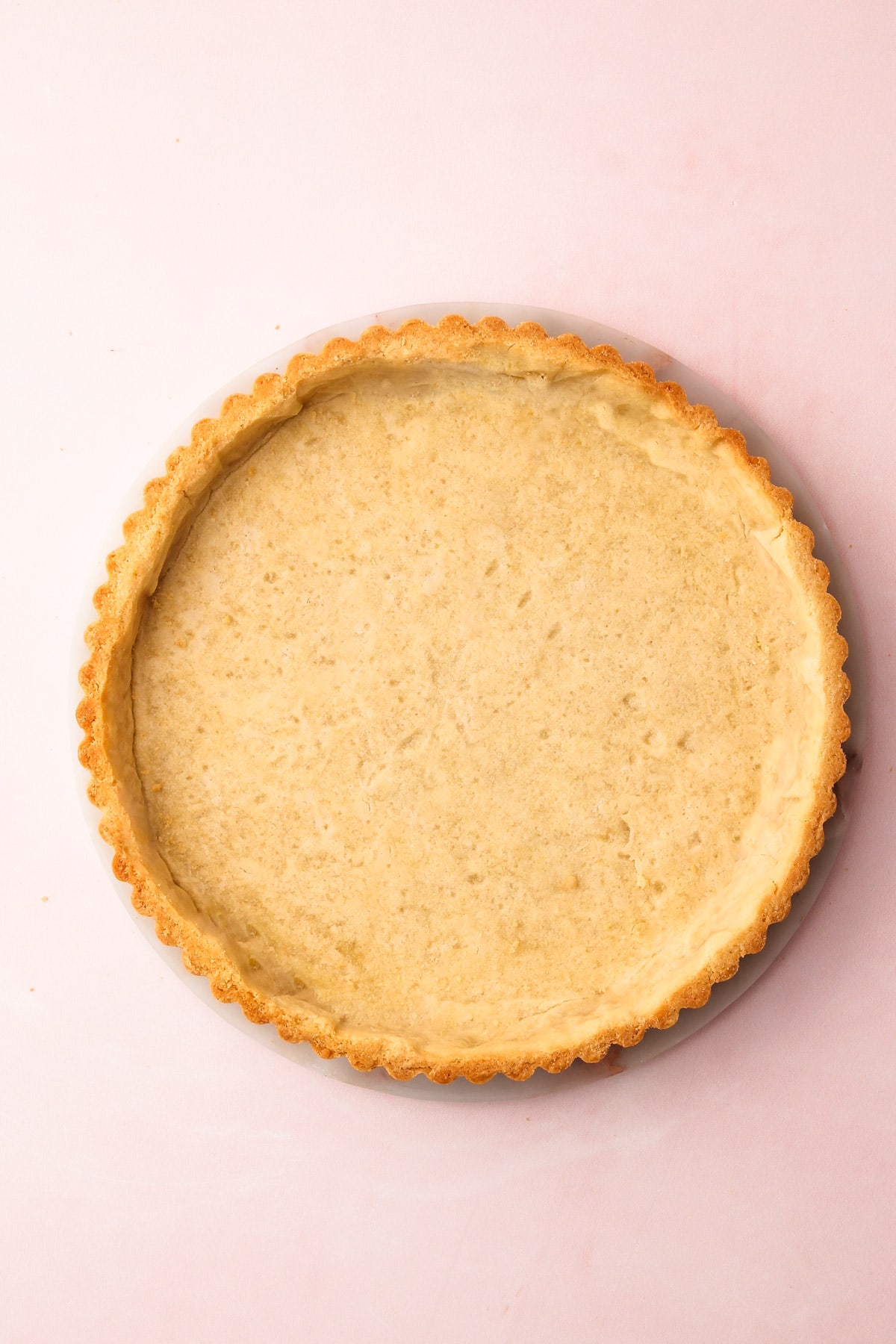
Want to save this recipe?
Enter your email & I'll send it to your inbox. Plus, get weekly updates from me!
Pâte Sablée (pronounced pat sah-BLAY) is a classic French shortcut pastry. Its name might sound intimidating, but it's simply a sweet crumbly dough used for tarts and sweet pies. This sweet tart crust is basically a cookie (a bit like these shortbread cookies) baked in a tart pan or pie tin. It is different from other shortcrust pastry recipes, such as the Pâte Sucrée recipe, because an egg and almond flour are added in addition to the traditional sweet pie crust ingredients, which enhances the flavor and texture of the crust.
It is sturdy enough to hold a heavier tart filling (like a hefty Fruit Tart) but delicate enough to have a light buttery crispness to it. It also comes together quickly in a food processor and requires only 6 ingredients. Doesn't get any easier than that!
So, let's get to making it, shall we? The article below is jam packed full of useful information. You can jump around using the menu below, or skip to the end of the article for the full recipe.
Jump to:
Let's Talk French Pastry
There are three classic French pastry recipes: Pâte Brisée, Pâte Sucrée, and Pâte Sablée. However, depending on the source you reference, the differences between them can vary. This can make it difficult to understand why there are multiple pie pastry recipes and which one you should use. Therefore, I would like to briefly explain my understanding of the differences from my time studying pastry and how I differentiate and use them on this website.
Pâte Brisée: This dough can be used in sweet and savory applications and is the most basic of all pastry recipes. It is also the pastry that most closely resembles American-style butter pie crusts (which tend to emphasize flaky layers). The butter in Pâte Brisée is blended very thoroughly into the flour, resulting in a tighter ("shorter") crumb. It's a forgiving pastry that is easy to make (and eat). This is a great everyday dough for everyday pie recipes.
Pâte Sucrée: This is also known as sweet pie crust. This pastry uses similar ingredients to flaky Pâte Brisée, with one big exception: granulated sugar. The added sugar not only makes the pie dough sweet, but it also makes it crisper and more tender because of the granulated sugar cuts through the gluten formation. It has some flake to it, but not as much as a flaky pie dough without sugar. It's great if you want a classic pie crust, but for a pie that needs to be refrigerated before serving, such as a chocolate cream pie.
And finally, the dough at hand: Pâte Sablée has most of the same ingredients as the previous two. However, it has added fat in the form of an egg, as well as almond flour. This extra fat not only improves the flavor of the pastry but also adds a delightful crisp yet tender texture. And instead of granulated sugar, which is more coarse and inhibits gluten, powdered sugar contributes to a sturdy yet crumbly texture.
Ingredients Needed and Substitutions
Here is a brief overview of the ingredients needed for this recipe. The full recipe with quantities is listed below this text in the recipe card.
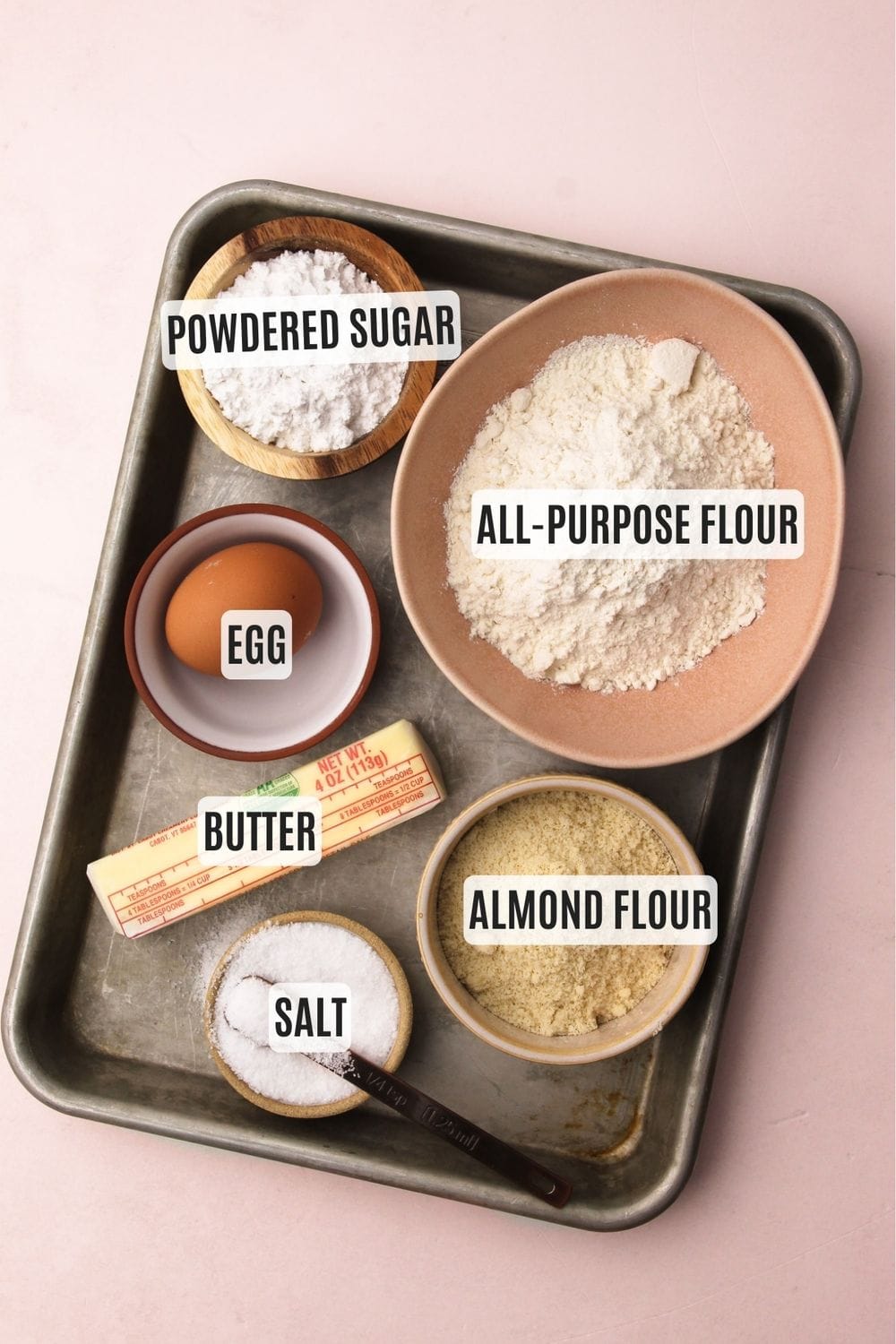
- all-purpose flour (Weighing your flour is the most accurate way to measure. If you aren't going to weigh it, make sure to spoon it into the measuring cup, then level it off)
- almond flour (I cannot recommend a substitute for this, but instead, use the shortcrust recipe in this French Silk Pie for a very similar recipe)
- powdered sugar
- unsalted butter (regular butter is good for this, I don't recommend a higher fat European-style butter--the recipe calls for slightly softened butter---it should be left at room temperature for about 15 minutes before using)
- egg
- salt (This recipe was tested using Diamond Crystal coarse kosher salt. If you use Morton's kosher salt or fine salt, decrease the volume by half)
Step-By-Step Recipe Overview
Using the food processor makes preparing this pastry so easy. It's done in a matter of minutes and the clean-up is minimal since it's all made in one bowl.
Here is a quick visual overview of the steps needed to make this recipe. This is not the actual recipe, which is located at the end of this article and has much greater details to ensure success.
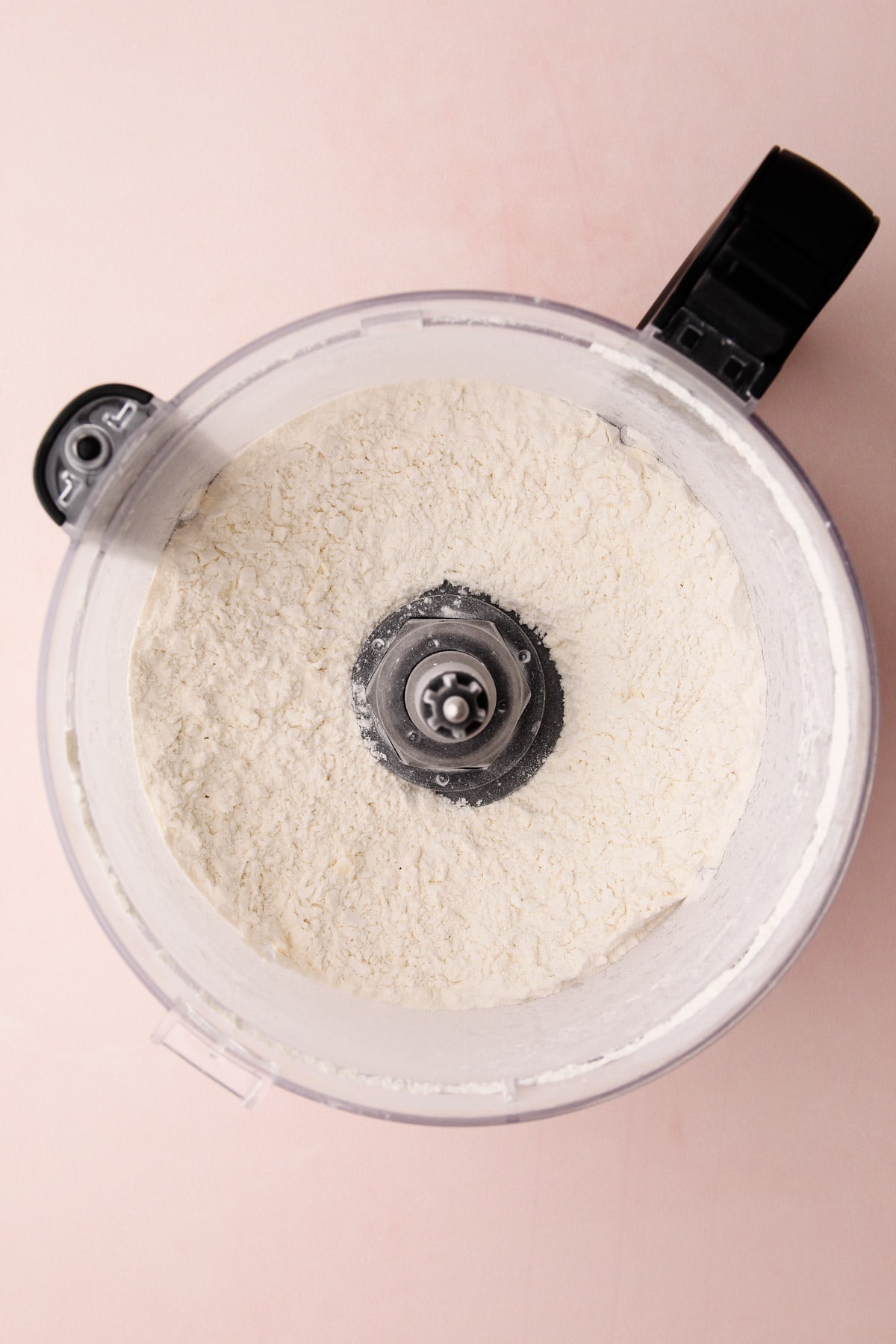
Step 1: Add the dry ingredients to the food processor. Pulse until they are well combined.
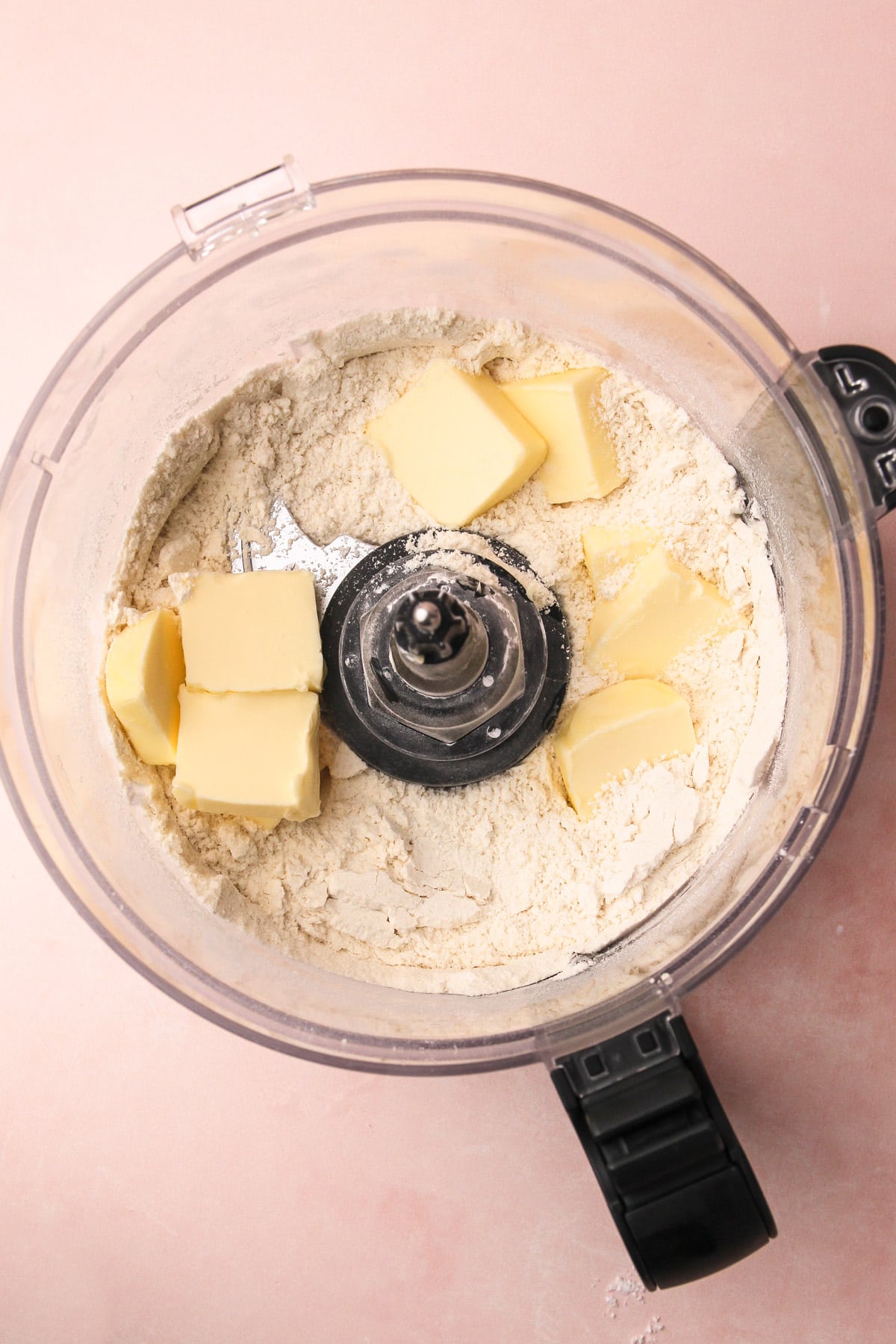
Step 2: Add the semi-softened butter and pulse until it’s broken down into small pieces, no bigger than the size of a pea.
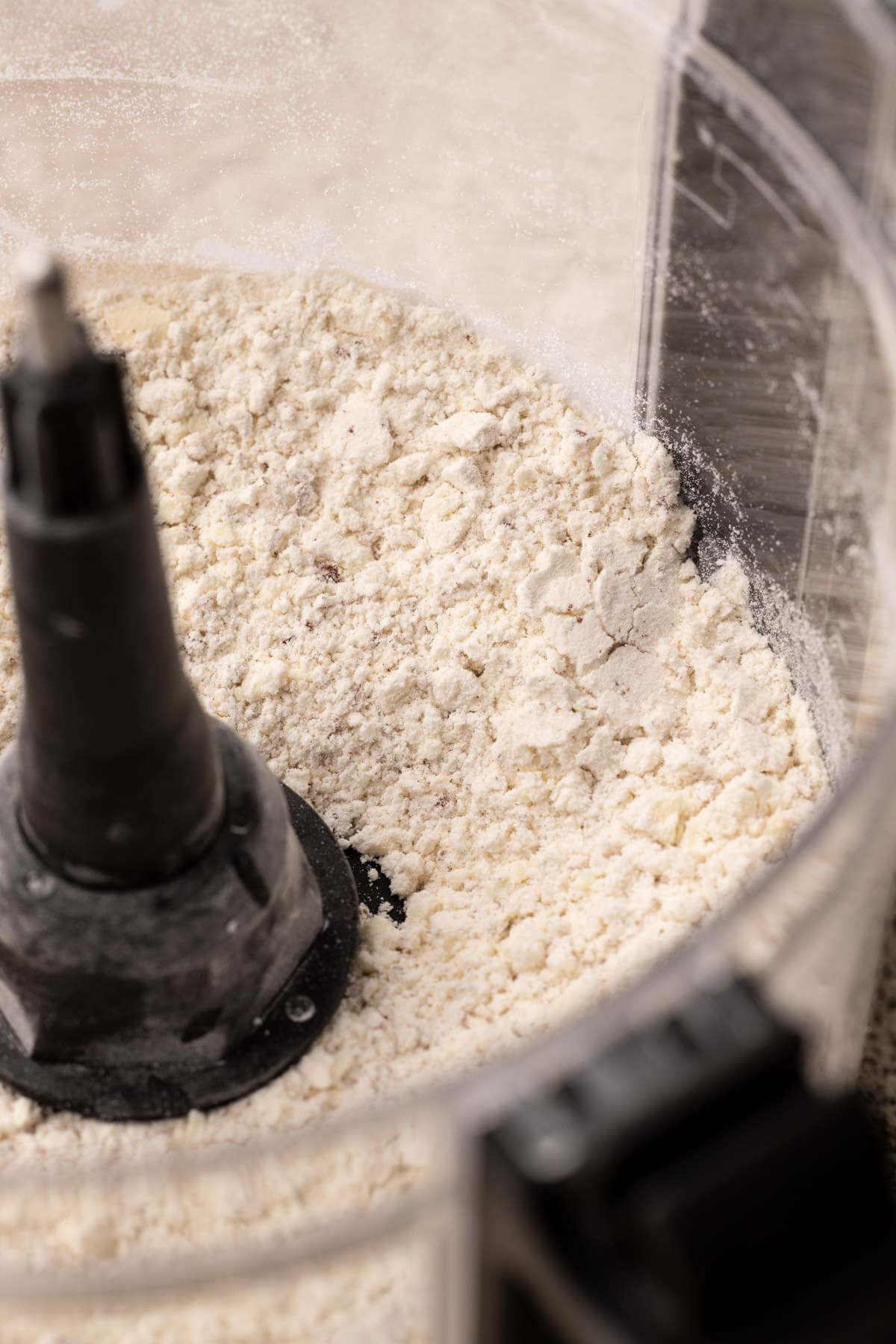
Step 3: Be careful not to over-process at this point, the dough should not be cohesive at all. It should look like crumbly dry powder.
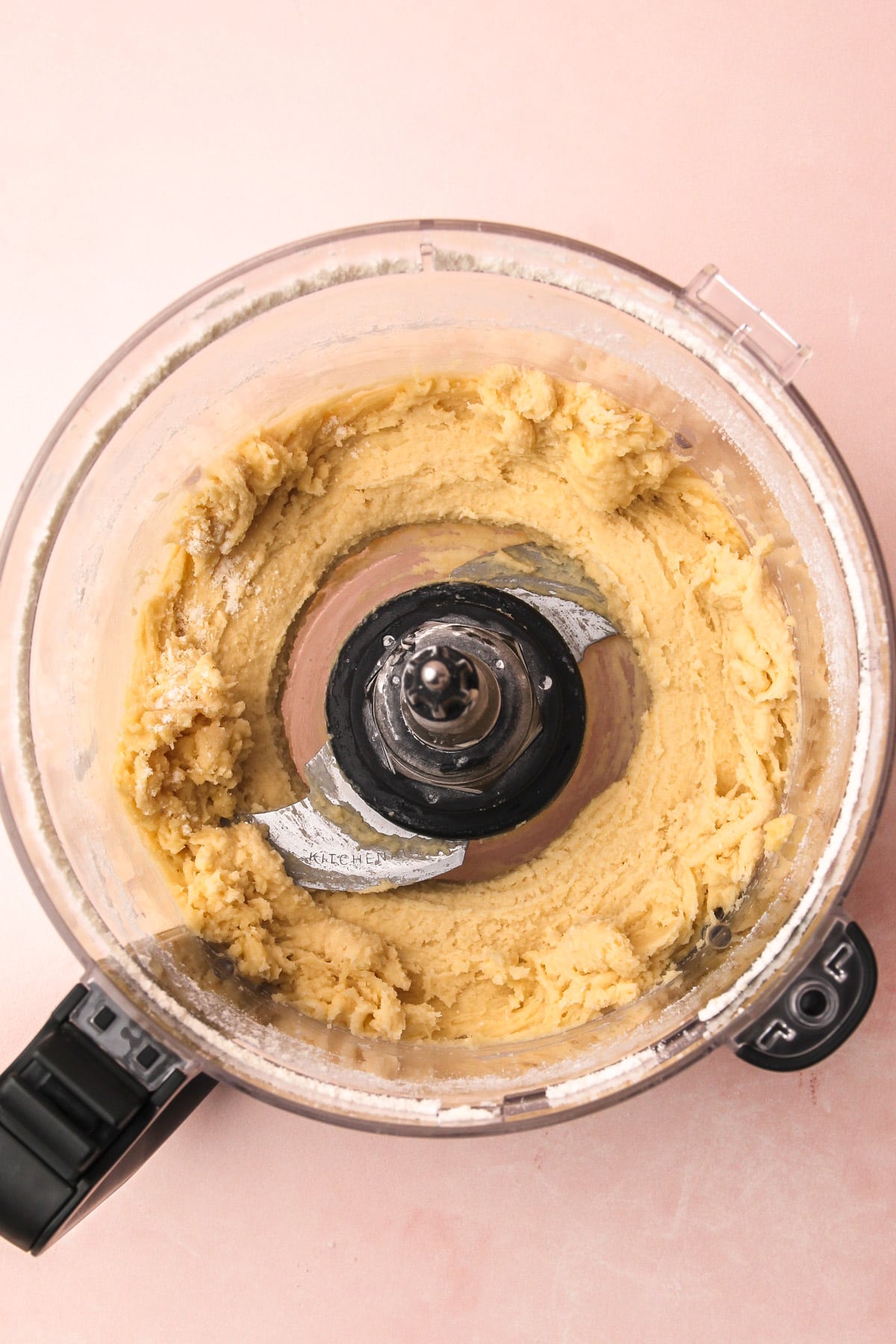
Step 4: With the machine, add the egg and process until the dough comes together. Then stop! Processing it beyond this point will overwork the dough.
Making it Without a Food Processor
If you don't have a food processor, it can be made in an electric stand mixer (like this Stand Mixer Pie Crust). To make it:
- To begin, use the paddle attachment to blend the dry ingredients first.
- Next, add the butter and mix on medium-low until it is mostly blended in. The mixture should have a sandy texture.
- Add in the egg and mix on low speed until it's completely combined, and then immediately stop. Do not overwork the dough.
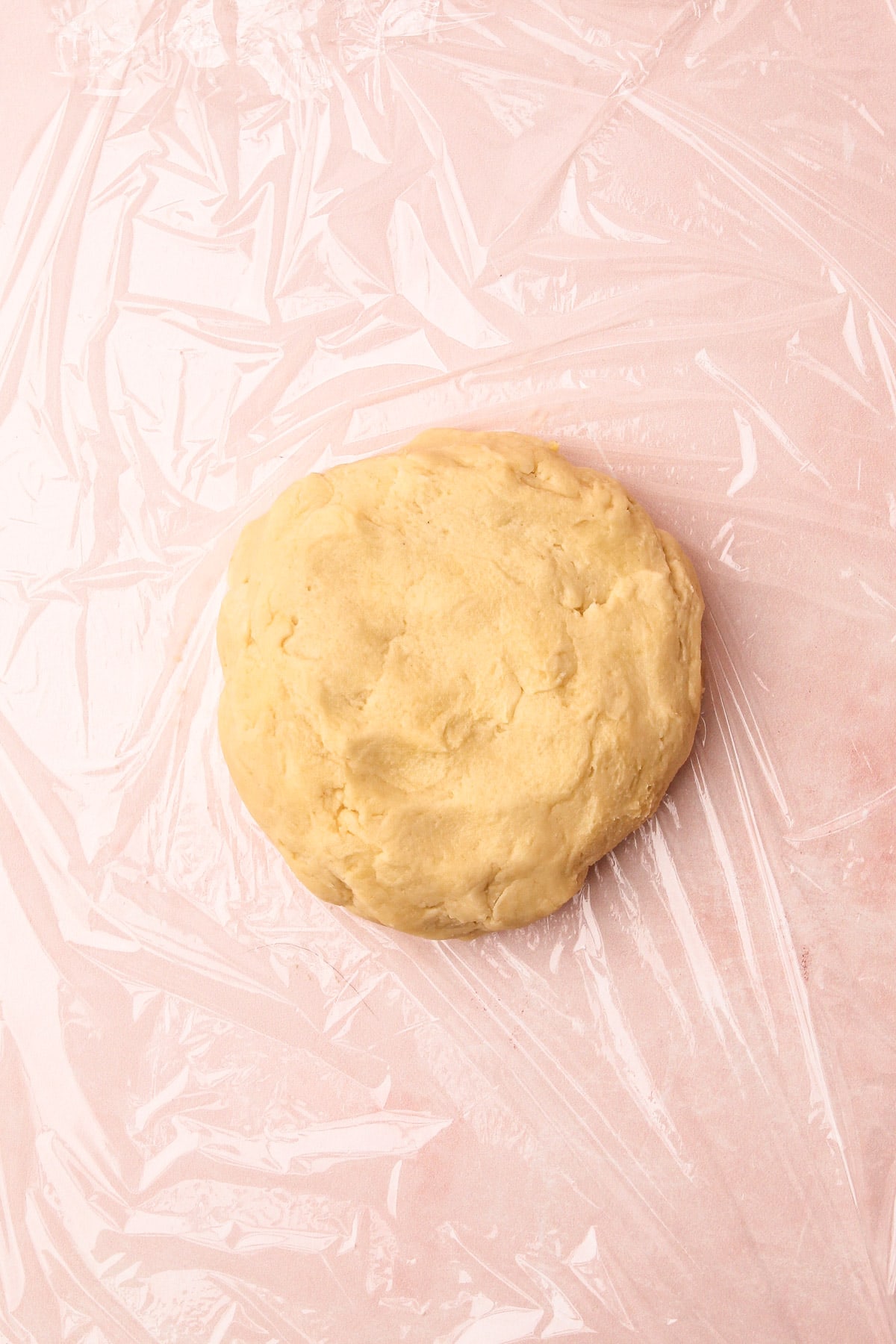
Tips for Rolling Out Pâte Sablée
After finishing the pâte sablée, it may be soft and difficult to roll out. Chill it for 30-60 minutes, wrapped tightly in plastic, before rolling it out.
Unlike a traditional butter pie crust made in a food processor, you’ll want the pâte sablée at the end of the process to be one cohesive ball, without any large butter pieces remaining. If you do have a large piece of butter, it can create problems when rolling it out and baking. If by chance you happen to see any large pieces of butter after you’ve made it, you can fix it by gently working the butter into the dough, so no large chunks remain.
Pâte sablée has more sugar than traditional Flaky Pie Crust, so it tends to stick a bit more. You can roll it out between two pieces of plastic wrap (I wouldn't recommend parchment). Or you can flour it enough so it doesn't stick, but not so much that it's covered in excess flour. This is my preferred method.
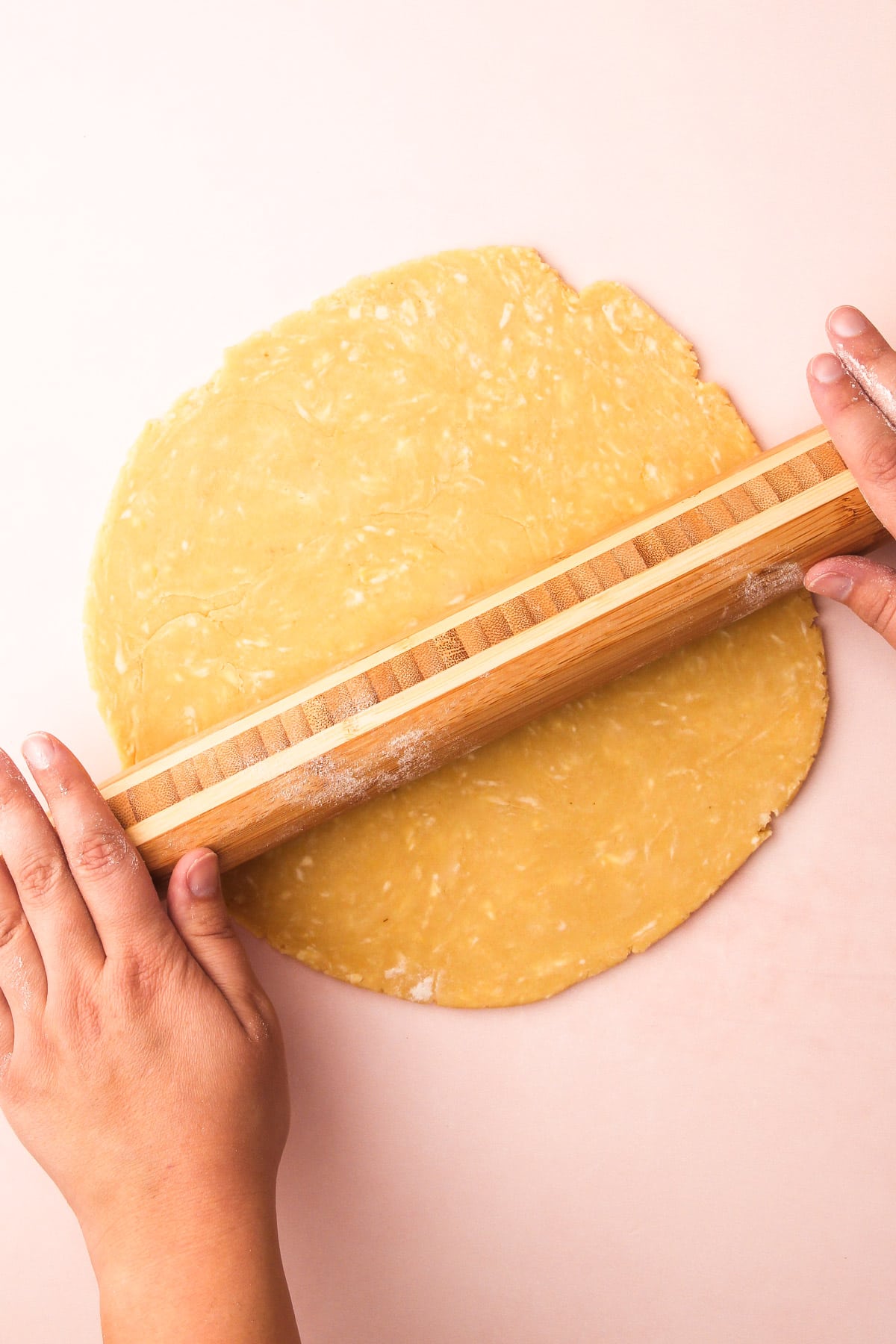
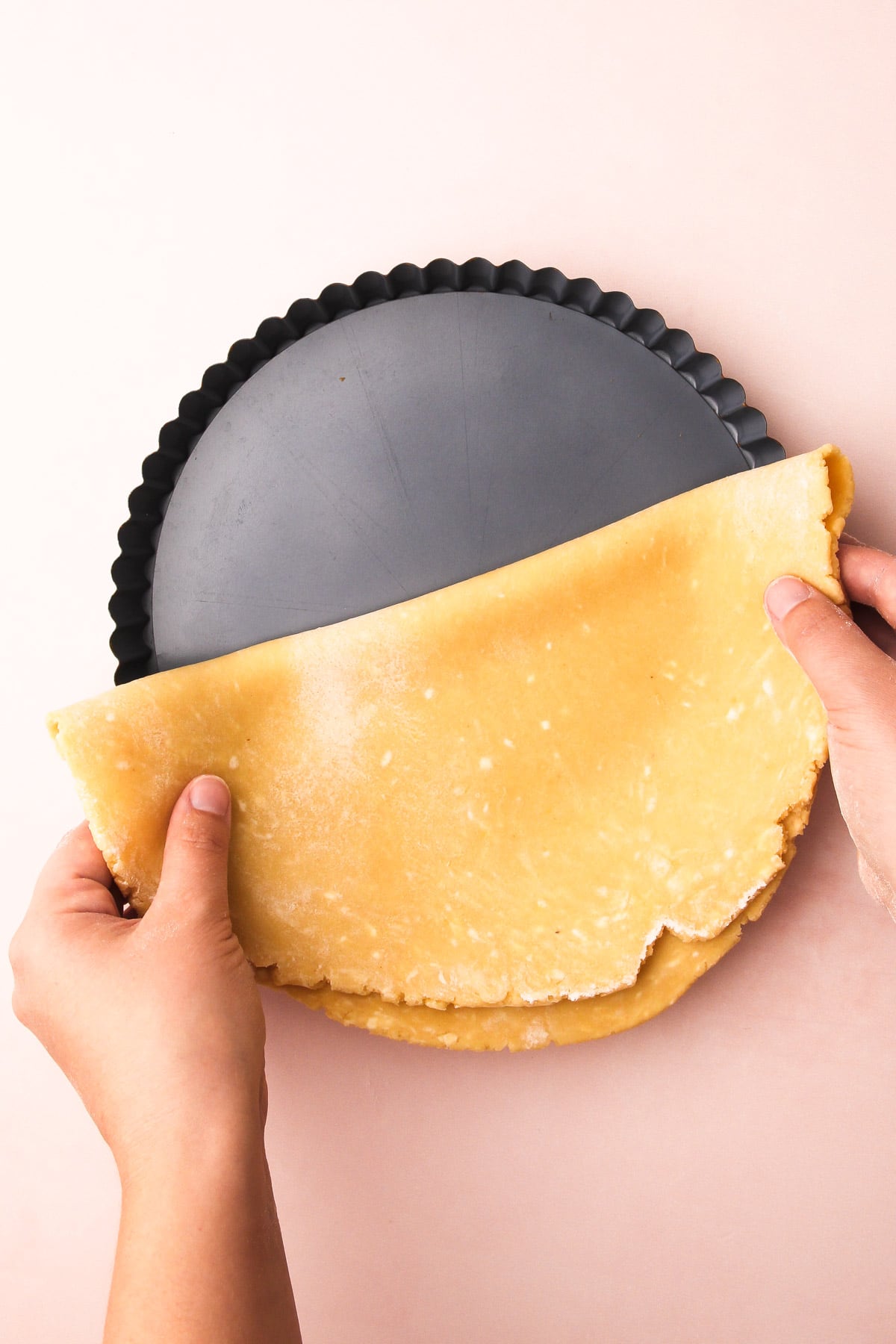
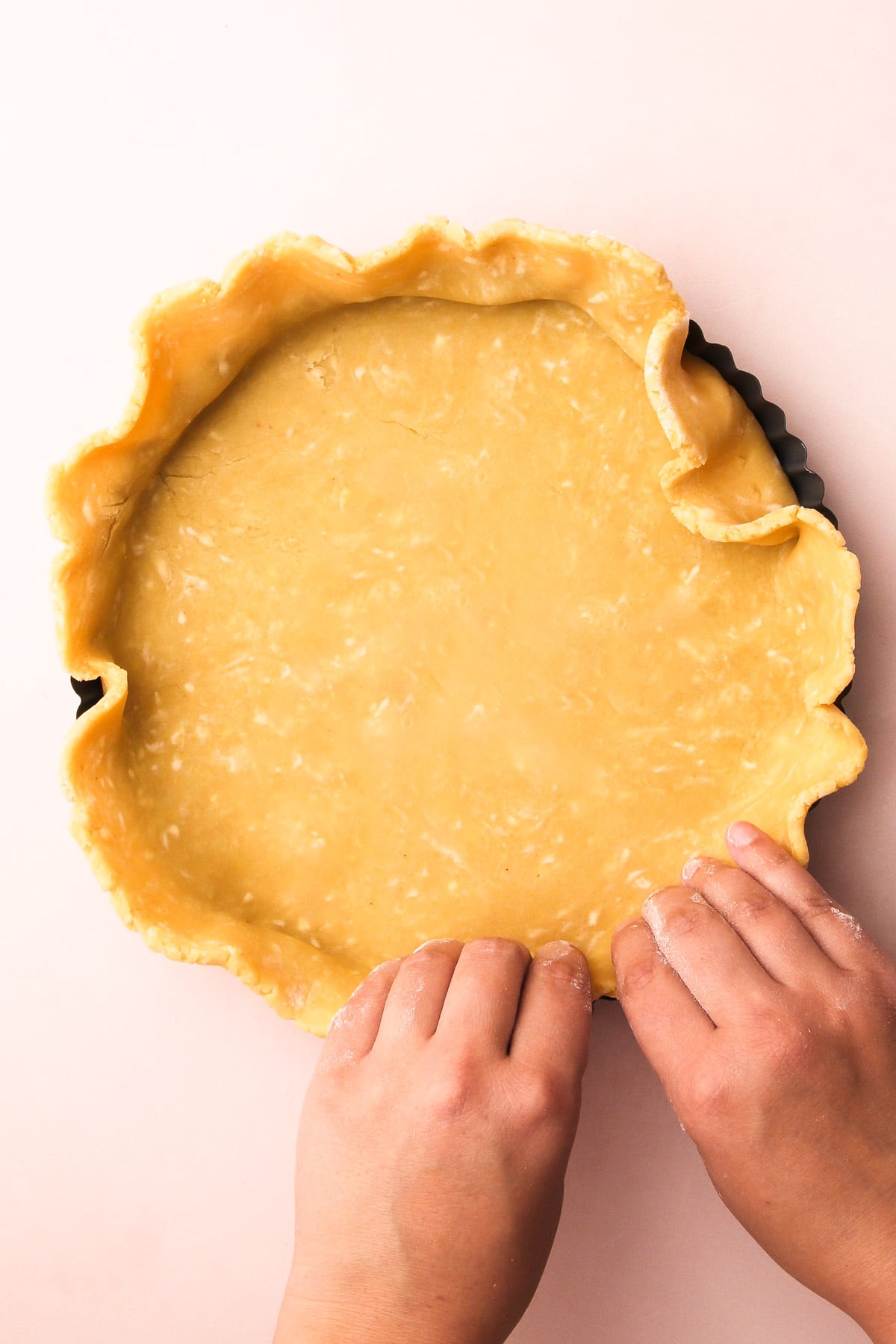
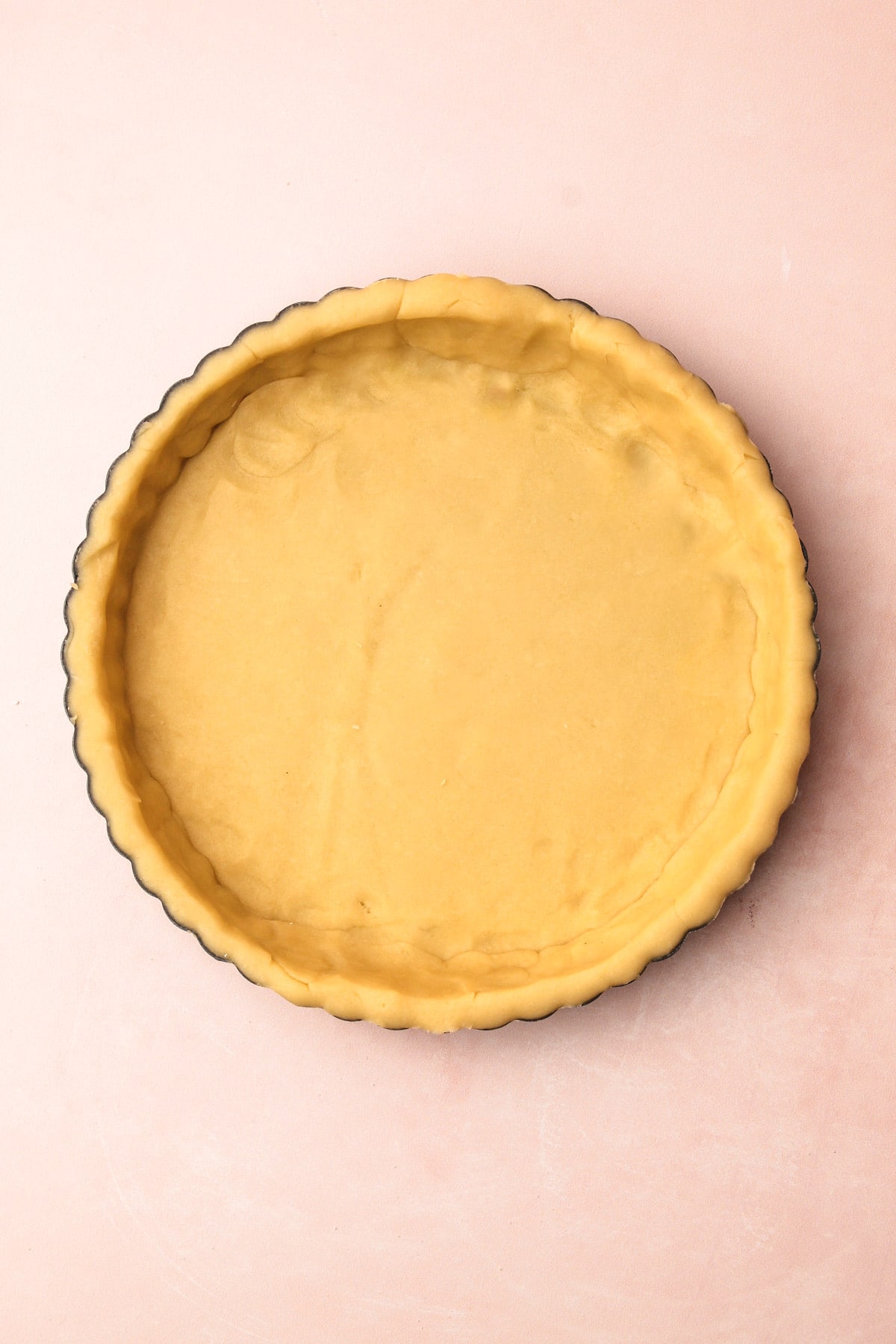
How to Use It
Pâte sablée is perfect for tarts, such as this Honeynut Squash Tart or Coconut Lime Tart. It also can work for a cream pie (as in, Chocolate Cream Pie) and with a baked custard (like this Coffee Custard Pie.)
You can use it as a blind-baked pie shell, or you can bake a pie directly in the raw pastry. Reference the recipe of the pie (filling) you are planning to make to decide on how to bake it.
If you are completely new to blind baking, check out this Blind Baking Guide I've created to teach you more about it.
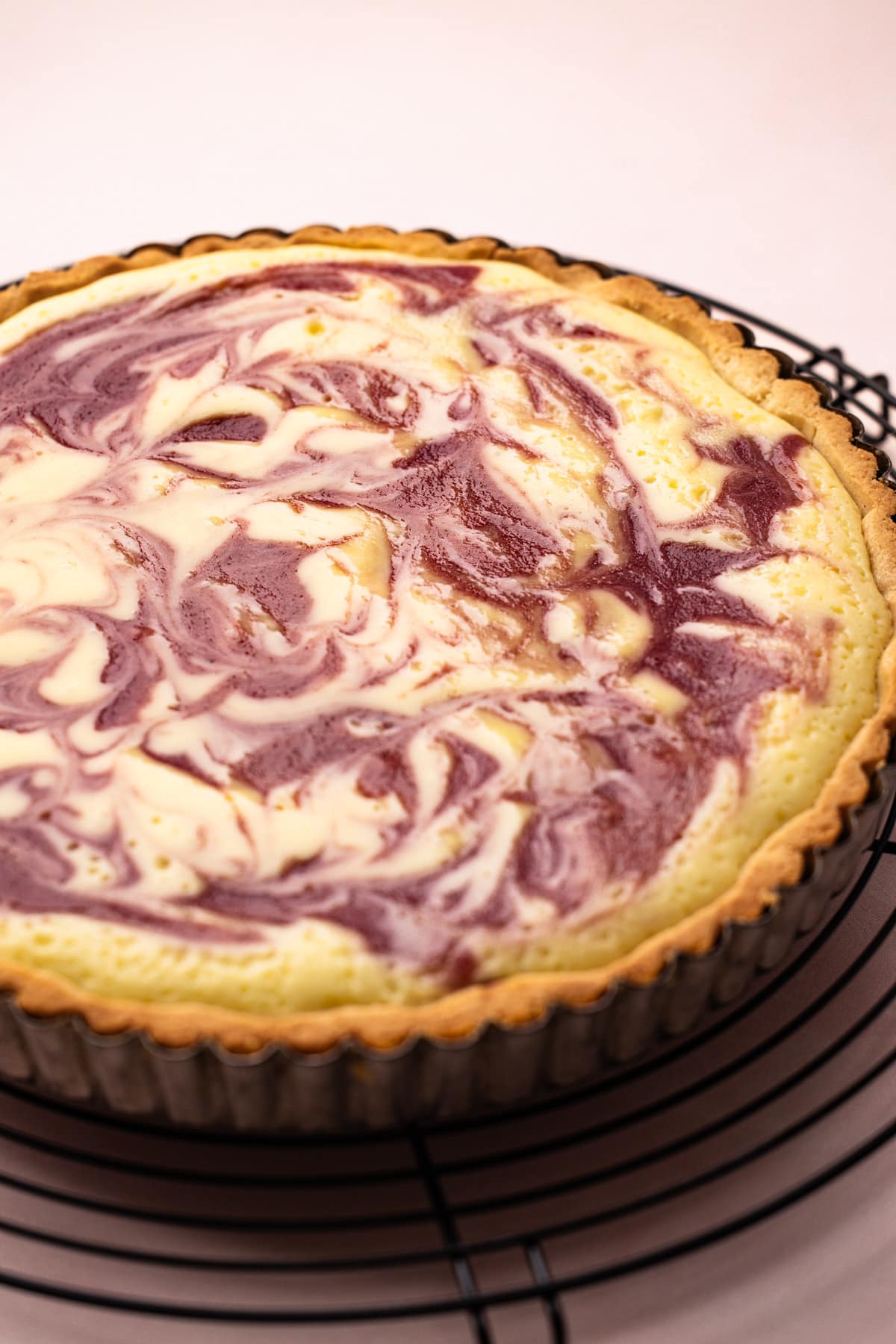
Baking Tips
- Let the dough chill briefly. This dough has a high fat content and very little added water. That means that you do not need to worry too much about letting it rest to relax any gluten or worry about hydration levels like you do in flaky butter pie pastry. But it does need to chill in the refrigerator for about 30 to 60 minutes. It will be too soft if you try to roll it out right after you make it.
- Weigh your ingredients! An electronic kitchen scale is not a huge investment. You can get one for around $25. I can’t recommend enough that if you want to get good at baking, get a scale.
- Bake this crust at a lower temperature. This pastry has a high sugar content and almond flour, so I recommend baking it at 375º to ensure it doesn’t burn. If you want to use this crust with a pie recipe that requires high temperature for a long time, it probably isn’t the best choice. Cover the edges of the pastry if they are browning too quickly.
More Pie Crust Recipes
I am so honored when you make a recipe from my site! If you make this Pâte Sablée, please leave a star ⭐️⭐️⭐️⭐️⭐️ rating with your experience! If you have any questions about this recipe, feel free to comment here, and tag me on Instagram!
Full Recipe
How to Make Pâte Sablée
Pâte Sablée is a sweet and crumbly French pastry dough used for tarts and pies. This extensive guide provides step-by-step directions and photos to help you make it with ease.
- Prep Time: 00:10
- Total Time: 10 minutes
- Yield: 12 ounces (enough for 9-11" tart)
- Category: Pie Crust
- Method: Food Processor
- Cuisine: French
Ingredients
- 1 cup (120 grams) all-purpose flour
- ½ cup (50 grams) almond flour
- ⅓ cup (40 grams) powdered sugar
- ½ teaspoon salt
- ½ cup (113 grams) unsalted butter, cubed and slightly softened (see note)
- 1 large egg
Instructions
- Add the flour, almond flour, powdered sugar, and salt to the bowl of a food processor and pulse 2-3 times to combine. Add in the butter and pulse 5-7 times, or until the butter is broken down into tiny pebbles.
- With the motor running, add in the egg and let the dough process until it forms together into a cohesive ball around the blade, about 1 minute.
- Remove the dough from the processor and shape it into a disk. Wrap it in plastic wrap, then chill it for at least 30 minutes.
Notes
Let the cubed butter sit out at room temperature for about 15 minutes before using it in this recipe.
Weighing your flour is the most accurate way to measure. If you aren't going to weigh it, make sure to spoon it into the measuring cup, then level it off. If you scoop the flour out with the measuring cup and then level, it could change the outcome of the final product.
This recipe was tested using Diamond Crystal coarse kosher salt. If you use Morton's kosher salt or fine salt, decrease the volume by half.
The pastry can be made about 2 days ahead of time. Or frozen for up to 3 months. Defrost overnight when ready to use.
This pastry has a high sugar content and almond flour, so I recommend baking it at 375º to ensure it doesn’t burn.
Some of the links on this page may be affiliate links. Everyday Pie is a participant in the Amazon Associates Program. As an Amazon Associate I earn from qualifying purchases, at no extra cost to you.


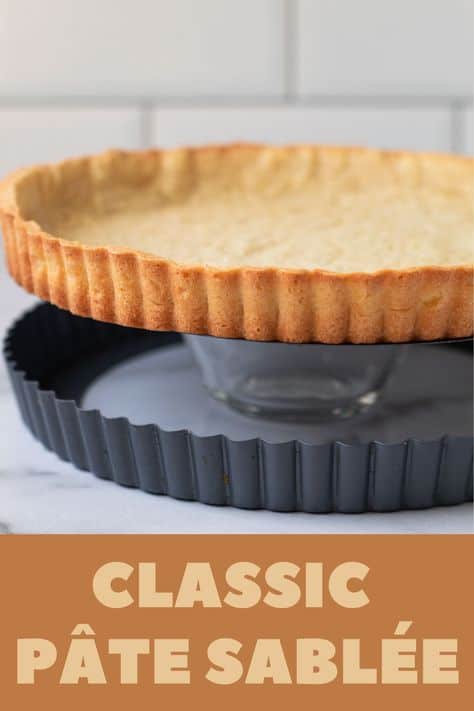
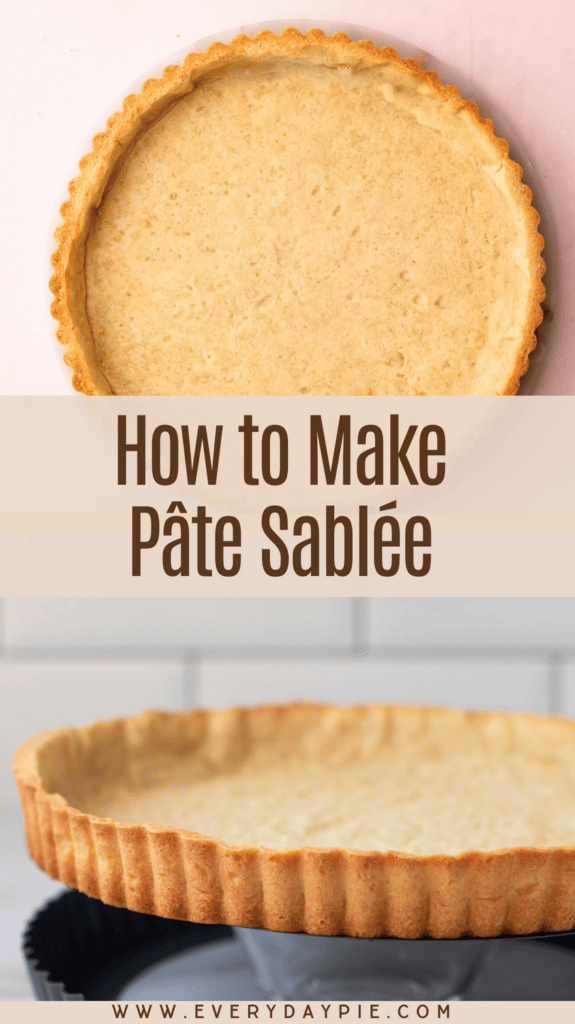
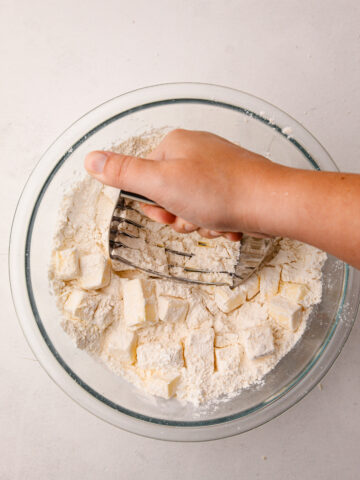
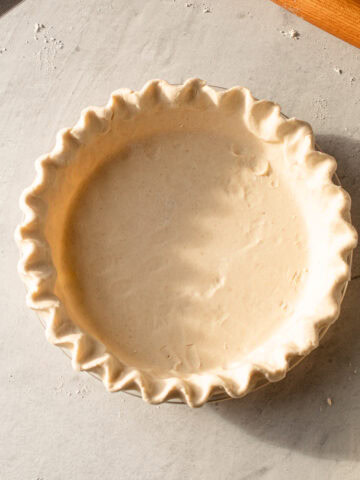

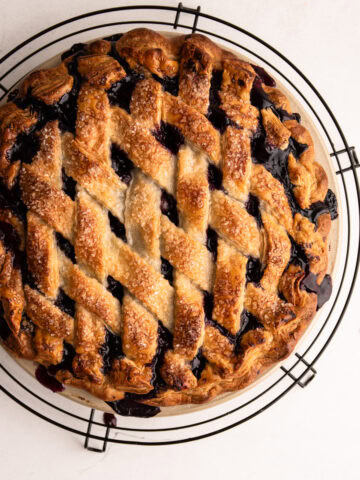
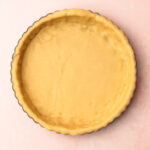
Michelle Tardy
This was delicious and everything was very well written to achieve a beautiful tart! My sides shrunk quite a bit but when I make it again in a couple days I’ll put more pie weights on the sides to try to prevent that from happening. I added vanilla powder and vanilla extract to the custard and used valrohna chocolate for the ganache. YUM!!!Thank you for a delicious dessert!!!
Christine K.
Please add instructions on how to blind-bake this tart shell. I re-read the recipe as you suggested to another reviewer, but there are NO further directions. If you mean to direct me to a specific recipe, please provide the name (and if possible, a link).
Do I press this dough into the tart pan, or roll it out?
Thank you for your help! I'm going to use this crust with your roasted plum and mascarpone cheese pie filling.
Kelli Avila
Hi Christine, all of your questions can be answered by reading the recipe and the article above it. I put a lot of time and effort into answering faqs and tips within the post and recipe. In addition to that, the roasted plum and mascarpone pie has all the instructions for making and baking the pate sablee crust within those instructions. Hope this helps! Kelli
Adriana
I just made this recipe and the dough came out super, way too soft, extremely sticky. Usually I make pie crusts with cold butter, not softened butter.... I followed your instructions very well. What am I doing wrong? Does not look like you picture
Kelli Avila
Hi Adriana---this dough will be soft. Did you see the part about chilling it? It needs to be chilled for 30-60 minutes before rolling out. This is a pate sablee, which traditionally uses softened butter to coat the flour, resulting in a more tender crumbly crust. It is different than american butter pie crust. Hope this helps!
Tatiana
Hi, is this with convection or normal oven?
Thanks!
Kelli Avila
All the recipes tested on this site are in a still (non-convection) oven!
Ginger Hackney
I’m ready to bake the Pâte Sablée but don’t see any instructions! Help!
Kelli Avila
Hi Ginger, please scroll down to the recipe!
L
Is almond flour necessary? Can I replace it with more all purpose flour?